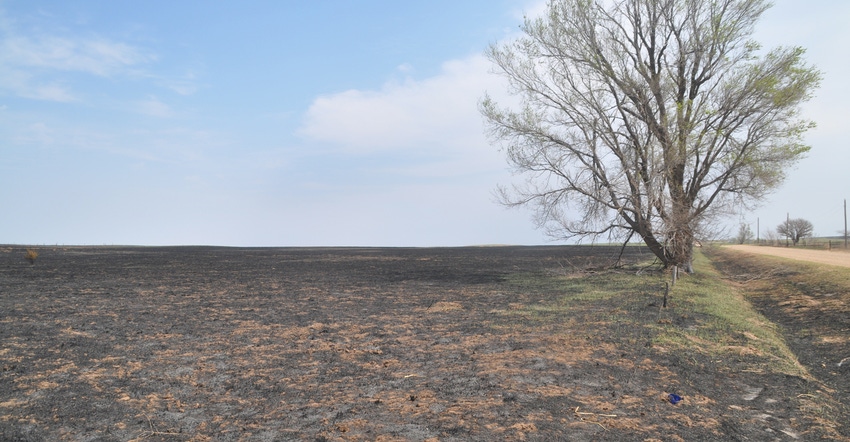
Stan Hazen feels very lucky to be alive. In fact, the Clark County rancher says he remembers wishing that he had time to call his wife and say goodbye at a point when it appeared that the wildfire that decimated more than 500,000 acres of Clark and Comanche counties was about to take his life.
"I remember thinking, 'Lord, don't let me die like this,'” he said almost three weeks after the ordeal. "I don't know how I survived. I think the good Lord was just in the pickup with me."
Hazen was driving down a gravel road heading east out of the southern end of Ashland with a 1,000-gallon water tank in the bed of his pickup, hoping to be able to provide help to volunteers fighting a wildfire south of town, when he got a call from his wife, telling him the farm was in danger, and he needed to head home.
The turnaround put the wind in his face, and along with it the smoke from the rapidly spreading fire. Faced with boiling, thick, black smoke, he quickly lost orientation.
"I didn't know where the fire was. I didn't know where the road was," he said. "I kept thinking I would drive out of it."
His truck went off the road and through two fences before crashing into burning round hay bales. "I remember a fireball going way up in the air," he said. "I was worried about the truck just dying. I mean these newer trucks [his was a 2015 Dodge Ram] have computers that when they are disabled, they just quit running. I kept praying the truck wouldn't quit on me."
He said he remembers just flooring the gas, hoping to plow through the burning bales.
"I was thinking about the line from the movie 'Smoky and the Bandit' where they said, ‘Hit that gate doing 98; let them truckers roll,’ and I was just hoping to keep rolling,” he said.
It worked. He plowed through and found himself on the other side, in a smoking but already-burned pasture.
"I think that 1,000-gallon water tank helped push me through those bales," he said.
The burning hay, however, had lodged in the grill of the truck and flames were engulfing the vehicle. He tried pulling the hose from the water tank in the bed, but it wasn't long enough and the flow wasn't strong enough to save his truck.
"I looked down and saw the flames coming up through the floorboards in the cab," he said. "I had all my records — 10 to 12 years of breeding records and herd records — in that pickup. It's all gone, and it can't be replaced."
His cellphone still worked so he called 911 for help and his wife to say that he was all right. He said 911 was able to locate his cellphone and provide coordinates that gave his brother directions to come and pick him up on a four-wheeler.
He said he knows other ranchers who lost their barns — and the offices in them — that contained the same kind of records he lost. They will struggle over the coming months to reconstruct all the details that they need to validate their operations.
"I think this fire is a wake-up call for a lot of people about recordkeeping, and we will start to make notes and change the way we manage a lot of things," he said.
Hazen said one of the big problems with the Starbuck fire, which killed far more livestock and wildlife than did the Anderson Creek fire a year ago, was that the wind shifted directions repeatedly during the 72-hour time frame that the blaze raged.
"Animals would race ahead of the fire to where they thought it was safe, and then the wind would change and they'd be right in front of the fire," he said. "It was just devastating."
He said he hopes ranchers will learn important range management lessons from the brutality of the fire — just as their counterparts to the east learned in last year's devastating Anderson Creek wildfire.
"One big lesson is that you have to manage the fuel load," he said. "You need to do prescribed burns when you can. You need to control eastern red cedars and other invasive species, and you need keep it grazed down.” He pointed out that one issue is all the land in the Conservation Reserve Program or in landlord-owned property. “They want to let all the grasses grow for habitat for wildlife. What they don't understand is that overgrowth is fuel for wildfire, and one day those fires will come."
About the Author(s)
You May Also Like




